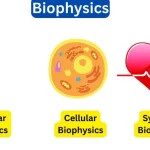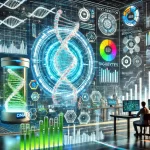
What programming languages and software skills are most applicable to bioinformatics?
November 24, 2023I. Introduction
A. Importance of Programming in Bioinformatics:
In the dynamic field of bioinformatics, programming skills have become integral for researchers and professionals. Programming empowers bioinformaticians to efficiently handle and analyze large-scale biological data, unravel complex biological processes, and contribute to advancements in genomics, proteomics, and beyond.
B. Role of Software Skills in Analyzing Biological Data:
Proficiency in programming equips individuals with the ability to design custom algorithms, automate repetitive tasks, and develop specialized tools tailored to the unique challenges posed by biological datasets. This skill set is instrumental in extracting meaningful insights from diverse omics data, facilitating the identification of patterns, and aiding in the interpretation of complex biological phenomena.
C. Overview of Programming Languages and Software in Bioinformatics:
A diverse array of programming languages and software tools are employed in bioinformatics. This introduction provides an overview of the landscape, highlighting the significance of programming languages such as Python, R, and others, as well as the role of specialized bioinformatics software in addressing the computational demands of biological analyses.
II. Essential Programming Languages in Bioinformatics
A. Python:
- Versatility and Readability:
- Python’s versatility makes it a go-to language for bioinformatics, offering readability and simplicity.
- Widely used for diverse applications, from data analysis to scripting complex bioinformatics workflows.
- Applications in Data Analysis and Scripting:
- Python’s rich ecosystem of libraries (e.g., NumPy, Pandas) facilitates efficient data manipulation and analysis.
- Preferred for scripting due to its concise syntax and ease of integration with various bioinformatics tools.
B. R:
- Statistical Computing and Data Visualization:
- R excels in statistical computing and provides robust tools for data visualization.
- Bioconductor, an open-source project in R, supports bioinformatics workflows with specialized packages.
- Bioconductor for Bioinformatics Workflows:
- Bioconductor enhances R’s capabilities for genomics and bioinformatics tasks.
- Widely adopted for its comprehensive collection of packages tailored to the analysis of biological data.
C. Perl:
- Historical Significance in Bioinformatics:
- Perl historically played a crucial role in early bioinformatics projects and tool development.
- Known for its powerful text processing capabilities and ease of integrating with command-line tools.
- String Manipulation and Text Processing:
- Perl’s strength lies in string manipulation, making it suitable for parsing and processing bioinformatics data.
- While its usage has declined, Perl scripts are still found in legacy bioinformatics tools and pipelines.
III. Specialized Software Skills
A. Command-Line Tools:
- Unix/Linux Commands:
- Proficiency in Unix/Linux commands is fundamental for bioinformaticians.
- Essential for navigating file systems, file manipulation, and running bioinformatics tools from the command line.
- Shell Scripting for Automation:
- Shell scripting (e.g., Bash) is crucial for automating repetitive tasks and creating efficient bioinformatics workflows.
- Enables the integration of multiple command-line tools into coherent pipelines.
B. Version Control Systems:
- Git and GitHub:
- Git is a distributed version control system widely used in bioinformatics for tracking changes in code and data.
- GitHub, a platform built around Git, facilitates collaboration, code sharing, and version management.
- Collaboration and Code Management:
- Version control ensures reproducibility and collaborative development in bioinformatics projects.
- GitHub’s features, such as pull requests and issue tracking, enhance teamwork and project management.
IV. Bioinformatics Libraries and Frameworks
A. BioPython:
- Biological Data Handling:
- BioPython is a powerful library for handling biological data, providing modules for reading, writing, and manipulating various bioinformatics file formats.
- Supports the representation of biological sequences, structures, and annotations.
- Bioinformatics Algorithms:
- BioPython includes implementations of essential bioinformatics algorithms, such as sequence alignment and searching.
- Facilitates the development of custom bioinformatics tools and pipelines.
B. Bioconductor:
- Comprehensive R Packages for Genomic Analysis:
- Bioconductor is an open-source project that provides a rich collection of R packages for the analysis and comprehension of high-throughput genomic data.
- Specialized packages cover areas like microarray analysis, RNA-seq, and ChIP-seq.
- Workflows for High-Throughput Data:
- Bioconductor offers predefined workflows and pipelines for common bioinformatics tasks.
- Enables researchers to perform sophisticated analyses and visualizations within the R environment.
V. Data Visualization Tools
A. Matplotlib (Python):
- Plotting and Visualization:
- Matplotlib is a versatile plotting library for Python, allowing users to create a wide range of static, animated, and interactive visualizations.
- Capable of generating various plot types, including line plots, scatter plots, histograms, and more.
- Integration with Bioinformatics Workflows:
- Matplotlib integrates seamlessly with Python-based bioinformatics workflows, enabling the visualization of genomic data, statistical results, and other biological information.
- Widely used in Jupyter notebooks for interactive data exploration.
B. ggplot2 (R):
- Grammar of Graphics for Data Visualization:
- ggplot2 is an R package that follows the Grammar of Graphics principles, providing a consistent and powerful framework for creating visualizations.
- Users can build complex plots by combining simple building blocks, enhancing clarity and customization.
- Creating Publication-Quality Plots:
- ggplot2 is favored for its ability to generate publication-quality plots suitable for scientific publications and presentations.
- Offers a high level of flexibility in designing plots and supports themes for consistent styling.
VI. Workflow Management Systems
A. Nextflow:
- Declarative and Scalable Workflows:
- Nextflow allows the creation of complex, scalable, and reproducible workflows using a declarative scripting language.
- Users can express computational pipelines concisely, facilitating collaboration and ensuring workflow transparency.
- Reproducibility and Portability:
- Emphasizes reproducibility by incorporating containerization (e.g., Docker) for software dependencies, ensuring consistent results across different computing environments.
- Portable workflows can be easily executed on various platforms, enhancing accessibility and flexibility.
B. Snakemake:
- Workflow Specification in Python:
- Snakemake uses a Python-based domain-specific language for defining workflows, making it accessible to users with programming skills.
- Enables the specification of rules for each step in the analysis, defining input, output, and processing instructions.
- Rule-Based Data Analysis Pipelines:
- Based on a rule-oriented approach, where each rule represents a step in the workflow, making it intuitive for users to design and modify pipelines.
- Supports automatic parallelization and optimization, improving the efficiency of data analysis workflows.
VII. Database Management and Query Languages
A. SQL (Structured Query Language):
- Relational Database Management:
- SQL serves as a standard language for managing relational databases, organizing data into structured tables with predefined relationships.
- Essential for storing and retrieving biological data in a structured and organized manner.
- Querying Biological Databases:
- SQL is widely used to retrieve specific information from biological databases.
- Biologists and bioinformaticians can use SQL queries to extract relevant data subsets, perform filtering, and analyze relationships within large datasets.
VIII. Machine Learning and Data Science in Bioinformatics
A. scikit-learn (Python):
- Machine Learning Algorithms:
- scikit-learn provides a rich set of tools for implementing various machine learning algorithms.
- Widely used for classification, regression, clustering, and dimensionality reduction in bioinformatics applications.
- Applications in Predictive Modeling:
- Leveraging scikit-learn’s capabilities, bioinformaticians can develop predictive models for tasks such as disease classification, protein function prediction, and drug response modeling.
B. Bioinformatics in R:
- ML and Statistical Packages:
- R offers specialized packages for machine learning and statistics in bioinformatics, including caret and randomForest.
- Researchers can employ these tools for tasks like feature selection, classification, and regression analysis.
- Integrating Machine Learning with Genomic Data:
- Bioinformatics in R enables seamless integration of machine learning techniques with genomic data, fostering advanced analyses in fields such as functional genomics and personalized medicine.
IX. Continuous Learning and Community Resources
A. Online Courses and Tutorials:
- Platforms like Coursera, edX, and Bioinformatics.org:
- These online platforms offer a plethora of bioinformatics courses catering to various skill levels.
- Coursera and edX host courses from top universities, providing comprehensive learning experiences.
- Learning Paths for Bioinformatics Skills:
- Structured learning paths guide individuals through the sequential acquisition of bioinformatics skills.
- These paths often cover programming languages, statistical methods, and specific tools essential for bioinformatics practitioners.
X. Challenges and Considerations
A. Staying Updated with Evolving Technologies:
- Rapid Changes in Bioinformatics Tools:
- The fast-paced evolution of bioinformatics tools requires professionals to stay vigilant.
- Continuous monitoring of updates, releases, and emerging technologies is crucial.
- Continuous Learning Strategies:
- Establishing effective strategies to foster ongoing learning in the dynamic field of bioinformatics.
- Emphasizing the importance of staying informed through conferences, webinars, and collaborative platforms.
XI. Future Trends
A. Integration of AI and Bioinformatics:
- Deep Learning in Genomic Data Analysis:
- Harnessing the power of deep learning for complex genomic pattern recognition.
- Improving accuracy in tasks like variant calling, gene expression prediction, and functional genomics.
- Emerging Trends in Computational Biology:
- Exploring novel approaches and methodologies in computational biology.
- Trends such as network biology, single-cell analysis, and integrative multi-omics studies shaping the future of bioinformatics.
XII. Conclusion
A. Importance of Programming and Software Skills in Bioinformatics:
- Highlighting the critical role of programming skills in effectively handling and analyzing biological data.
- Emphasizing the necessity of staying proficient in diverse programming languages and tools for continuous advancements in bioinformatics.
B. Building a Versatile Skill Set for Bioinformaticians:
- Encouraging bioinformaticians to cultivate a diverse skill set encompassing programming languages, software tools, and data analysis techniques.
- Acknowledging the dynamic nature of the field and the need for ongoing learning and adaptation to contribute effectively to bioinformatics research and applications.


















